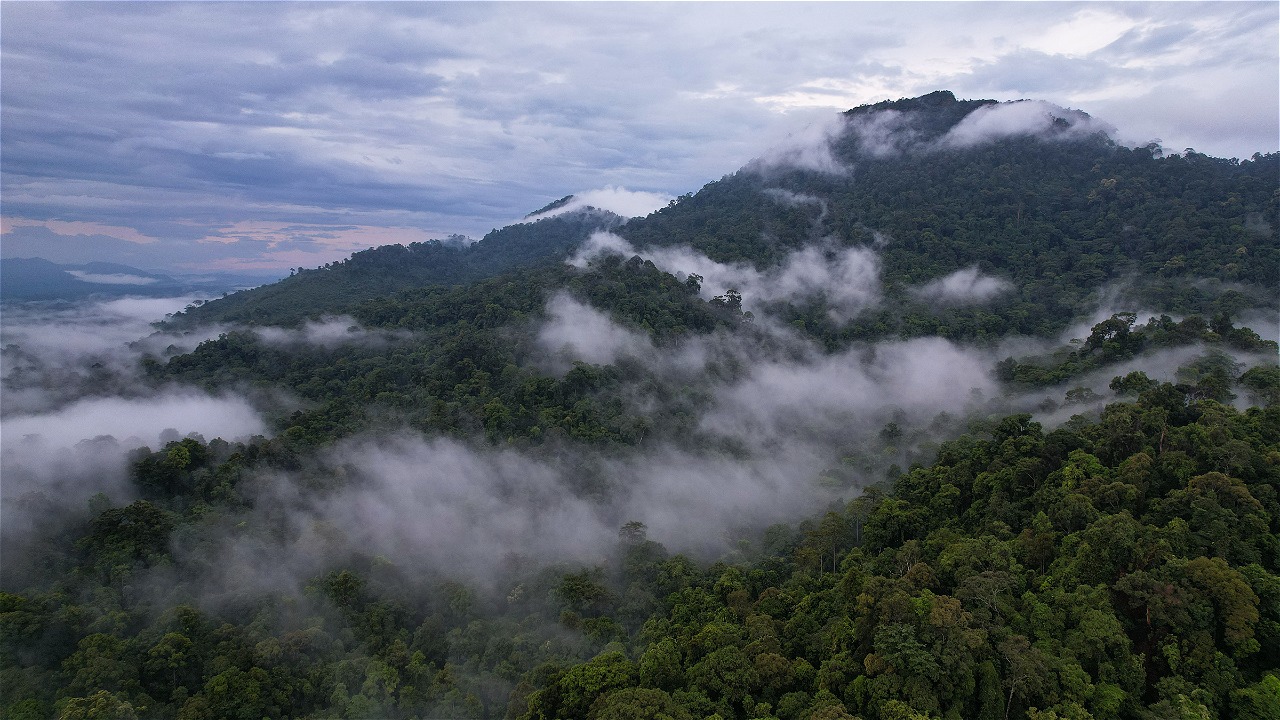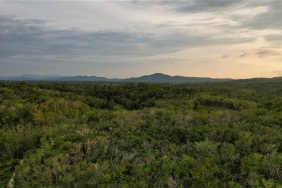WHY TRANSBOUNDARY CONSERVATION MATTERS
By: Iwan Wibisono (Heart of Borneo Leader) and Aditya Rahman (Program Development Consultant of WWF HoB Programme)
George Lucas’s cult classic Star Wars often depicts Master Yoda as a Jedi master who always teaches his padawan (Jedi in training) to keep the balance of the force between the light and the dark side; essentially good vs evil.
The potential power of the force is strong but is easily misused and trap people to cross to the dark side of the force. In the real world, economic development can be illustrated as the light side with virtuous impact as an instrument to improve people’s welfare and eradicate poverty. But when those efforts are implemented unsustainably, it risks of crossing to the dark side and become a driving force of natural resources degradation. Unsustainable practices of development are transforming the industry just like when Anakin Skywalker transformed into Darth Vader.
Although Star Wars is a science fiction story from a galaxy far far away, there are lessons that can be learnt in how we need to address the challenge of balancing development without imparting negative repercussions to achieve human empowerment that sustainably respects the nature. To achieve this, joint efforts is key to ensure that human development stay within sustainable or green corridors.
The Jedi always work collectively, as it can harness and unlock limitless potential when put into the context of impact that can be achieved when three or more Countries combine forces for the sake of transboundary conservation and low carbon development.
Global rise of temperature readings shows that in 1901, the planet’s surface warmed by 0.7-0.9˚ Celsius per century, yet that rate has doubled in 1975 to 1.5-1.8˚ Celsius per century according to the international State of the Climate in 2017 report.
The warming, resulting from trapped heat within the earth’s atmosphere (the “greenhouse effect”) is primarily driven by human activity, in accordance to the findings present in the Intergovernmental Panel on Climate Change (IPCC) Fifth Assessment Report. Beside the energy sector, agricultural and land conversion activities are among the contributing factors to this trend.
This is a challenge faced by everyone, as natural resources destruction and degradation and its adverse effects are affecting ecosystems globally and not only isolated in countries where industrial activities are most active. This is why there is little disagreement among conservation scientists today that conservation efforts, especially those aimed to most effectively protect habitats and biodiversity should occur at the ecosystem level.
This train of thought have led to the need to transcend political and administrative geographical boundaries. Beyond all the complexity that lies in the road ahead, for the sake of the future of biodiversity and species, transboundary conservation is not an option, but a necessity.
Declared in 2007, the Heart of Borneo (HoB) Initiative is a transboundary collaboration among Brunei, Indonesia, and Malaysia to unlock conservation and sustainable development that improves social welfare while minimizing deforestation, forest degradation, and associated loss of biodiversity and ecosystem services.
The HoB Initiative is crucial not only because it is the pioneering model for transboundary conservation in Southeast Asia, but due to the fact that the Initiative covers approximately 30% of the Island’s land area, more than 22 million hectares of tropical rainforest spanning across three countries will see benefit if the cooperation and commitment between member states comes into fruition.
Furthermore, the transboundary tropical forest is home to an astounding 6% of the world’s biodiversity and is one of the planet’s richest treasure troves.
Due to the complexity of it being an international cooperation in nature, a priority challenge faced by the Initiative is the need to harmonize plans under HoB with current national and sub-national development plans to ensure that efforts being done reflect economic, social, climate, biodiversity, and poverty reduction objectives.
Yet it is alarmingly necessary for HoB and its member countries to overcome such barriers. Economic activities are having significant repercussions in the area’s natural capital and is causing degradation to its capacity to sustainably provide ecosystem goods and services.
“Business-as-usual” practices that often pivots on unsustainable use of natural resources are without a doubt causing negative impacts on ecosystems, biodiversity, and the quality of social health and livelihoods especially forest-dependent communities.
Yet even if each respective State develops their own strategy in conserving the ecosystem, as pointed above these areas transcend political border meaning that actions in one part of the area will undoubtedly affect other parts of the area. This is where a proverbial handshake is necessary between States to at least ensure that what is being done in each of their respective geographies is aligned with one another, to prevent backlash and counter-productive actions.
This will be the focus of this year’s Trilateral Meeting among HoB members, to be held on 27-28 September 2018 in Miri, Sarawak, Malaysia, with a particular focus to reignite the Initiative in conjunction to the global momentum of international commitment to fight climate change.
Even beyond intensifying cooperation, one of the focuses that the Trilateral Meeting will look at is how to secure financial sustainability that is in line with low-carbon development in the area, as there is massive potential to be unlocked when participation from the public and private sector are increased.
This starts with high-level signals to help drive support and commitment at local level, which is a key recipe for the success of a transboundary sustainable development and conservation approach such as the HoB Initiative.
A strong and wise Jedi master like Yoda or Obi Wan Kenobi is nothing without the cooperation and commitment of all its Jedi Warriors, much like how the HoB Initiative will not be able to achieve significant progress if not supported by its member countries and relevant stakeholders in order to facilitate transboundary cooperation for sustainable development and conservation.





